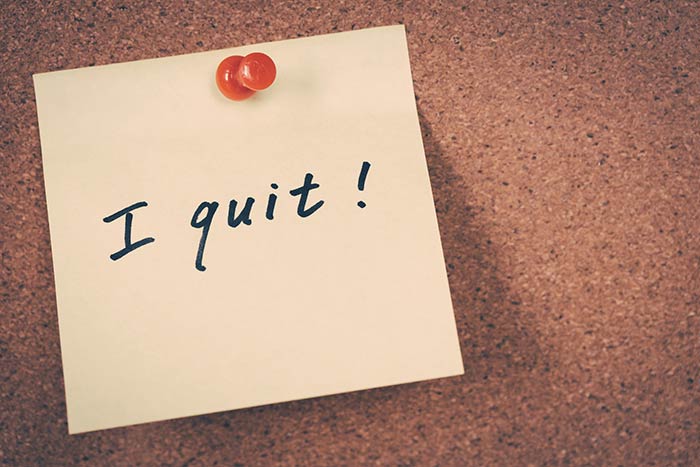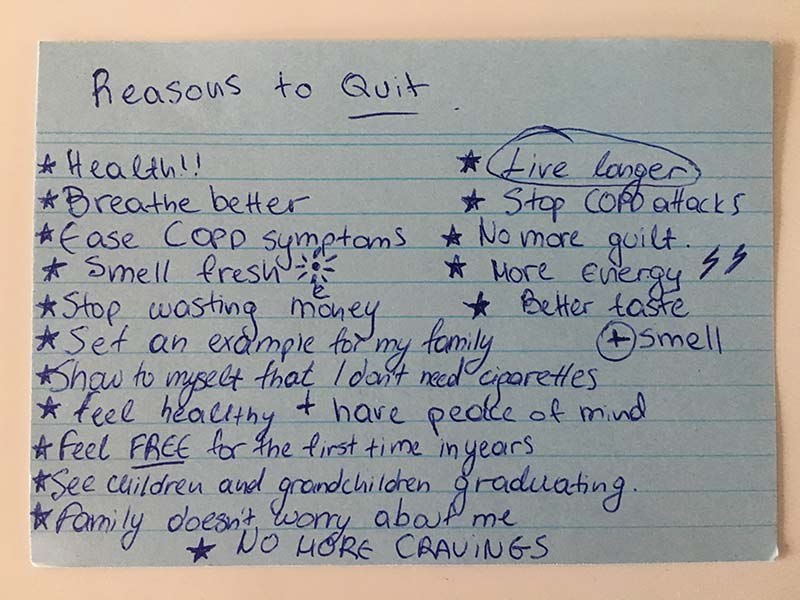Do you ever think to yourself “I can’t quit smoking?”
Maybe you really want to quit, but it seems scary, overwhelming and hard.
So you keep postponing it for next week. And then the week after, and the one after that… until you forget about it.
Has this ever happened to you?
If yes, know that you are not alone.
See, all of us have felt stuck with this addiction. Wanting to quit and not wanting to.
Before I became a smoking cessation coach and created the CBQ quit smoking method, I used to smoke too. I found quitting excruciatingly hard, and I was baffled by these questions:
Why can’t I quit smoking?
What is wrong with me?
Am I that weak?
I was afraid of failing. And I was afraid that my life would be miserable without cigarettes.
I used to think that I want to quit smoking but I enjoy it too much.
But as I found out later, these are not the real reasons why we can’t stop smoking.
The Reason Why You Can’t Quit Smoking
The reason you can’t stop smoking although you want to.. has nothing to do with you.
Let me explain.
After sitting down and interviewing smokers who told me “I need to stop smoking but I can’t”… I realized that they all have 1 thing in common:
They don’t know HOW to get started!
There is a quote by Lao Tzu that says “The journey of a thousand miles starts with a single step.”
Same way, your journey to your smoke-free life starts with a single step.
But to take that step, you have to know what it is.
Right?
If you don’t know how to start, you will always feel that quitting is beyond your reach.
But if you know what’s the first step, you will feel more confident in taking it.
So in this article, I will show you what the first quit smoking stage is.
This is one of the four stages of the CBQ method. This first stage will ease you into the quit smoking process.
Plus, I will give you 3 ways you can get started with this first stage as soon as you finish reading!
Ready?
The First Step Towards Your Smoke-Free Life
Every change starts with a decision. Same goes for kicking the nicotine habit.
Think about it.
When you try to quit smoking without making a solid decision first, then your mind overflows with doubt.
You keep thinking “ I can’t quit smoking ” and this brings you down.
Right?
But when you decide, really decide, to quit… then you feel empowered. You never second guess yourself because you feel ready.
And when you feel ready, then you are the one in control; not the cigarettes.
That’s why the first step towards your new, healthy life is to Choose to Quit.
Before doing anything else, you have to make a firm decision to stop smoking.
You have to say:
“THAT’S IT. NO MORE! I have to do something.”
Think about it.
You’ve probably said: “I should, I could, or I want to stop smoking” many times before. But for some reason, you couldn’t stay motivated and quit.
But why?
It’s because you never really decided to quit.
Most people skip this stage because they mistake their desire to quit with a decision.
But the desire to quit doesn’t determine your commitment to follow through. A real decision does.
Ok, now you know what’s the first out of the 4 steps to a successful quit attempt.
So, let’s see the 3 best ways you can start with this first stage and decide to quit.
How to Go from I Can’t Quit Smoking to I Want to Quit Now
1. Make Quitting Less Overwhelming
Quitting can be an overwhelming goal because there are just so many things to do, too many things to consider.
This overload can be paralyzing.
So deciding when to stop smoking will help you move forward.
By setting a quit date, you are making your goal to be smoke-free more specific, more real, more tangible!
So pick a date that feels right but is challenging at the same time.
Quit in one week, two weeks or a month.
Just commit to it and note that day. Circle it in your diary or put a reminder on your phone.
And say it out loud: “I am quitting smoking on (your date)!”
2. Find Your “WHY”
After you set your quit date, you need to think about your reasons to quit smoking.
If you try to quit just because you have to.. then you won’t feel motivated for long.
But if you take a moment and reflect on the real reasons you want to be smoke-free, then your decision to quit will grow stronger. And you will quit smoking naturally.
So think with me now for a moment.
Why do you want to stop smoking?
Maybe your body has started giving you warning signs about your health and your energy.
Perhaps, you’re starting to realize that smoking has taken a toll on your pocket.
Or maybe you just want to live a long, healthy and happy life with those you love.
The problem is that all of these compelling reasons won’t stay on top of your mind when you have a craving.
That’s why you have to write them down and keep them with you at all times.
These reasons – your whys- will help you stay motivated without using your willpower.
Let’s do this together now.
Ok, so what is your reason for quitting?
I need to quit smoking because I want to…
- be healthy once again
- be there for my family and loved ones
- get my peace of mind back
- breathe better
- get rid of the cigarette smell
- stop wasting a fortune on cigarettes
- or feel vibrant and healthy
Whatever it is for you, just write it down!
Moving on…
3. Clear Your Mind from Doubt
After writing down the reasons you want to stop smoking, you’ll probably feel there’s still something holding you back.
That something is doubt.
You may feel uncertain about whether or not you can do this.
Or you may think that you should wait for a better time to quit.. a less stressful time.
All this hesitation is normal. It’s part of the process.
But if doubt stays in your mind, then it gets magnified, and it can keep you stuck. Every problem seems worse inside our head.
For example, have you ever been worried sick about something… thinking it over and over again…
…and when you talked about your worry with someone else.. you realized that it wasn’t as bad as you thought it was?
Well, doubt about quitting can be reduced the same way:
By taking it out of your head and putting it into words; either by writing it down or by talking about it with someone else.
So take a piece of paper now and write down every single thing that makes you doubt your decision to stop smoking.
Write, I believe I can’t quit smoking because…
- It’s too hard
- I don’t want to fail
- I think I won’t enjoy life as much without cigarettes
- I don’t have the support I need
- I live with other smokers
- I won’t be able to control my behavior
And keep on writing until your mind is empty.
And remember, you are not alone in thinking all those things.
Every ex-smoker went through this.
After all, fear and doubt about quitting are totally eliminated during the second quit smoking stage.
So for now, all you need to do is articulate and express what is worrying you.
How to Start and Finish Your Quit Smoking Journey
To quit smoking naturally and easily so that you will never miss cigarettes again, you will need to go through all of the 4 quit smoking stages of the CBQ method.
Following these 4 stages, in the right sequence, will free you from your cravings and remove the enjoyment you get from smoking.
So if you want to know more about the first stage as well as what to do after you decide to stop smoking…
Click here to get the exclusive video of the 4 stages.
It’s 100% free.
All you need to do is enter your name and email address. And make sure you watch it all because there is a free gift at the end of that video.










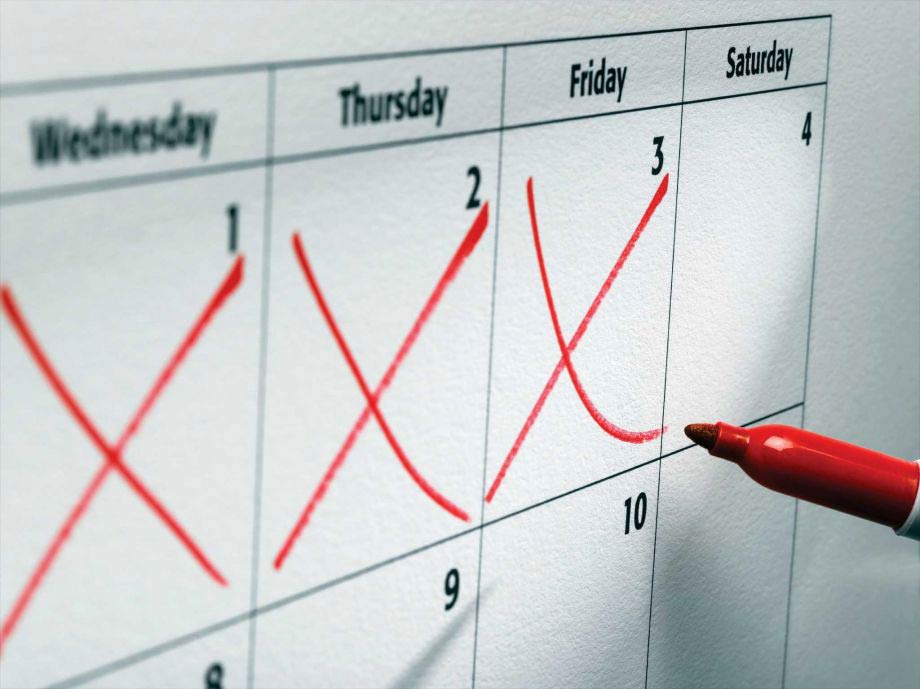





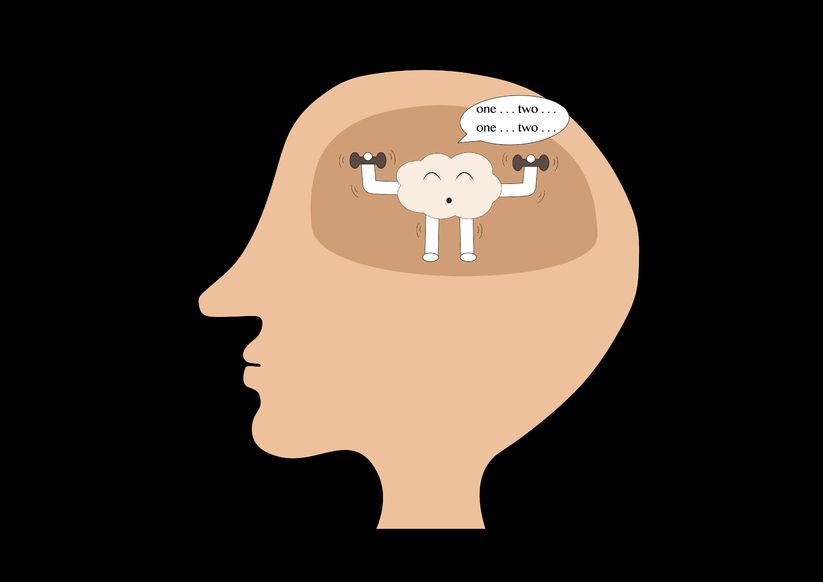
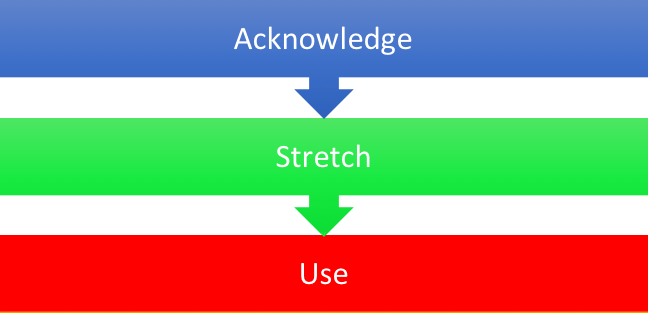
 Step 3: Use the decision-making muscle.
Step 3: Use the decision-making muscle. Your craving is the wave.
Your craving is the wave.